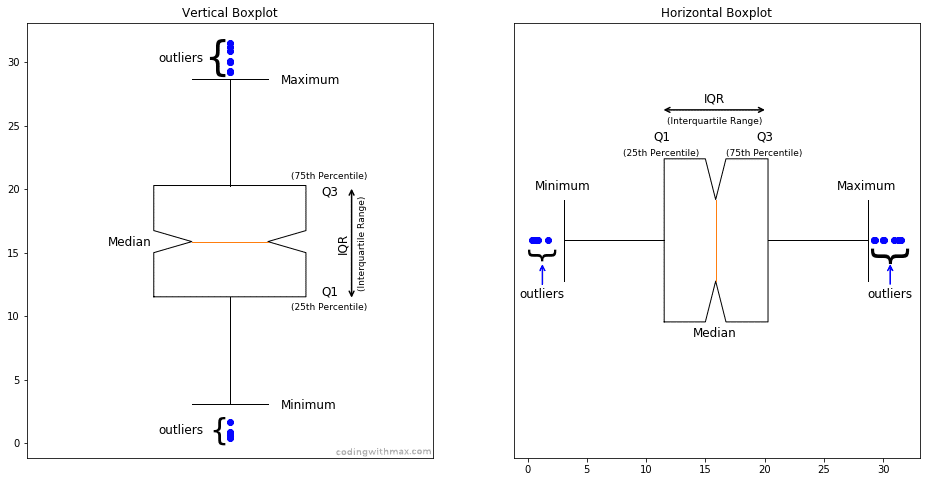

the second quartile (Q2) is the region that contains the second 25% of all data (25 – 50%),.The first quartile (Q1) is the region that contains the first 25% of all data (0 – 25%),.The goal, as mentioned above, is to equally split your data into four buckets containing equal amounts of data points each.

The quartiles are a general statistical definition. The interquartile range (IQR) tells us about the spread of the inner 50% of our data and how densely packed the data around the median is. The quartiles split our data into 4 equal buckets to allow us to quickly see how concentrated our data is. Let’s take a look at what that would look like as histograms and as box plots. Let’s say you are looking to compare the amount of cookies sold by 9 different boy scouts troops. With a histogram, you have to make educated guesses on what the median is, where the inner 50% of your data is, etc based on looking at the graph. Histograms are great, but they don’t work as well if you’re comparing 10 different data sets and need to know all the key statistical terms (that we’ll go into more detail in the next section) for each data set. Now you may be thinking, “What about histograms, Max? Those are fantastic for seeing how your data is distributed.” you want to compare the distributions of several different data sets.you want a quick statistical overview of how your data is distributed within one data set.

With this in place we can compute our statistics and then plot with we dive into the details of what each of those labels in the graphic above means, let’s first discuss when you actually should use a box plot. Stats, stats, stats = q1, med, q3 return bxpstats hstack (, x ) ]) # add in the remaining stats min ( wisklo ) # compute a single array of outliers

min ( wisklo ) > q1 : stats = q1 else : stats = np. compress ( x = loval, x ) if len ( wisklo ) = 0 or np. percentile ( x, whis ) # get high extreme max ( x ) else : raise ValueError ( 'whis must be a float, valid string, or list ' 'of percentiles' ) else : loval = np. isreal ( whis ): loval = q1 - whis * stats hival = q3 + whis * stats elif whis in : loval = np. Stats, stats = _compute_conf_interval ( x, med, stats, bootstrap ) # lowest/highest non-outliers Stats = q3 - q1 if stats = 0 and autorange : whis = 'range' # conf. percentile ( x, ( percents, percents )) # interquartile range nan continue # up-convert to an array, just to be safe Whis = input_whis # note tricksyness, append up here and then mutate belowīxpstats. normal ( size = 100 ) stats = if label is not None : stats = label # restore whis to the input values in case it got changed in the loop Import matplotlib.cbook as cbook import matplotlib.pyplot as plt import numpy as np # Generate some random data to visualise Quick solutionĪ quick fix (ignoring any implications for whisker locations) is to compute the boxplot statistics we desire, alter the locations of q1 and q3, and then construct the plot with ax.bxp: You should also carefully consider what altering the box percentiles means to outlier classification and the whiskers of the boxplot. Thus, one should be aware that departing from this convention comes at a risk of misleading readers. With box and whisker plots it is convention to plot the 25th and 75th percentiles of the data. Of course, with matplotlib anything is possible and so I set to work… Convention In the question a user asked if it was possible to make a boxplot with box boundaries at arbitrary percentiles, using matplotlib. This post was inspired by a question I answered on stack overflow. It's more fun to compute Matplotlib boxplots with custom percentiles | It’s more fun to compute It's more fun to compute Thoughts on maths and computing Blog Talks Teaching CV About Matplotlib boxplots with custom percentiles


 0 kommentar(er)
0 kommentar(er)
